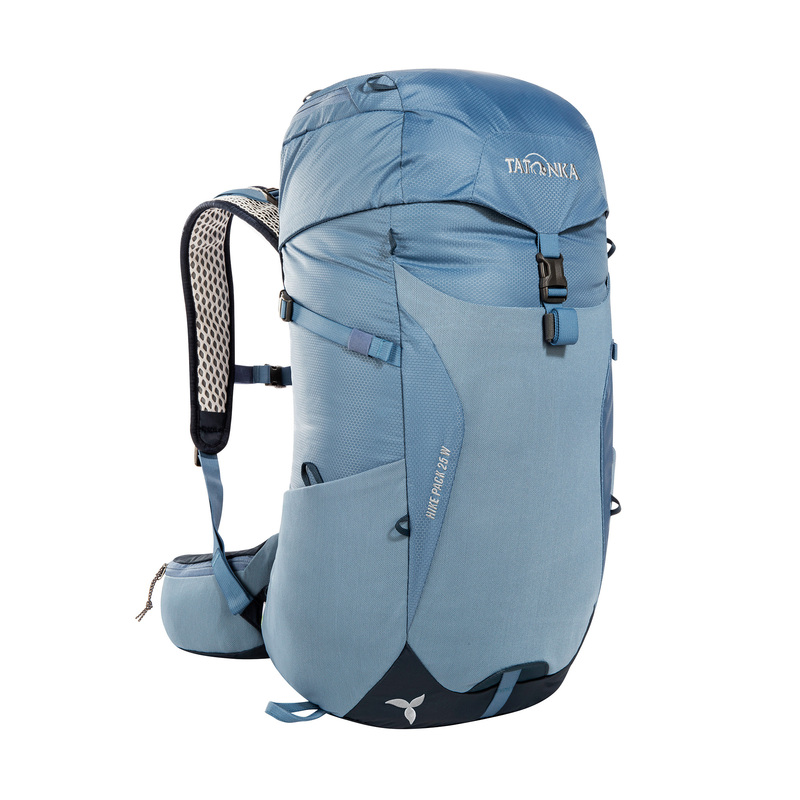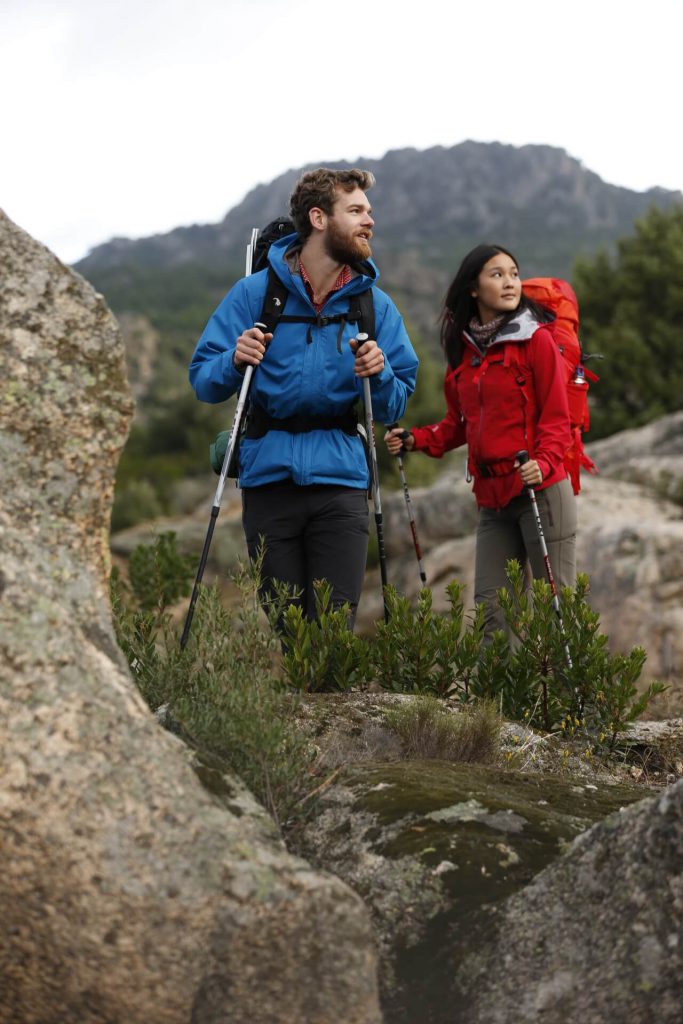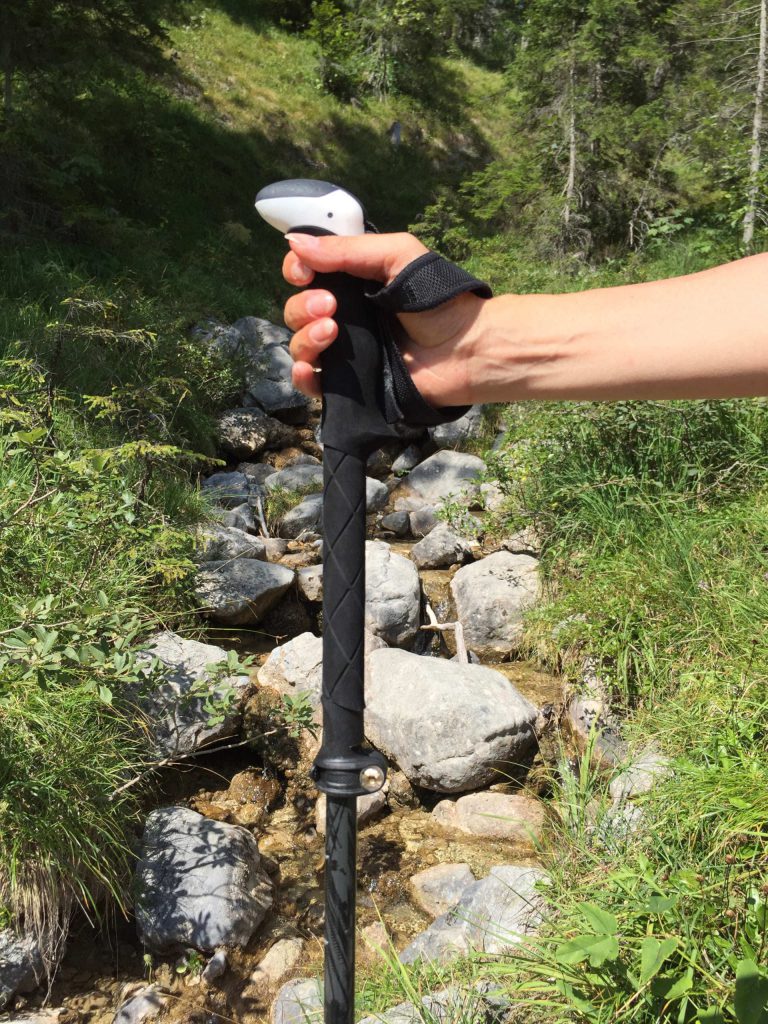Hiking sticks today are practically always an essential item in your trekking equipment. For some time now, they simply belong to your gear just as much as sturdy boots, a compact rucksack and weatherproof clothing. Finding the right ones for you is not always easy amongst the many offers available. Here we tell you what to take into account when buying hiking sticks and for which tours they are most suitable.
Hiking sticks nowadays have many uses. Whether in Nordic Walking or on long mountain and trekking tours, sticks provide stability and balance for the user through an even spread of stress to arms and legs as you walk. It is no longer only the knee joints and spine which take the body weight when walking, but rather more, a large part of the load is shifted to the arms: with the proper use of hiking sticks, the body is relieved of up to eight kilos per step.
Wear on the joints and tiredness in the locomotor system are minimized through even distribution of forces, such that compared to hiking without sticks, longer stages are possible. When the hiker is going uphill, the sticks help him to more momentum and faster progress. They also encourage an upright gait and thus prevent backache.
However, hiking sticks are not the patent solution for every hiking tour. Critics complain primarily that in some terrain they are in fact a safety hazard. The stick can break if too much force is used or wrongly used and this in turn can lead for example to a broken wrist through pressure at the wrong angle. In addition, the hiker no longer has his hands free and must stop at places that are difficult to pass, in order to put his sticks away. Habitual walking with hiking sticks can be a potential danger if the sense of balance and concentration on the tour are no longer trained and focused.
Also interesting: Hiking Corsica and Sardinia – Impressive tours along breath-taking coasts
In general, the use of hiking sticks is recommended on difficult and long tours in rough terrain. When walking downhill, hiking sticks can take weight off the joints or, for example, when crossing a stream or on slippery ground they can provide hold and security. Nevertheless, it is still advisable that an occasional hiking tour is undertaken without hiking sticks. These could be easier or shorter tours where you can rely on your own sense of balance and enjoy the freedom of movement.
Finding the right hiking sticks.
When buying hiking sticks there are a number of factors to be taken into account: The first of these is the material.
Carbon or aluminium?
In recent times two materials have established themselves: carbon and aluminium. As a rule the telescoping trekking poles comprise three tubes which can be inserted into one another and which are continuously adjustable.
Carbon fiber is especially lightweight and this can be of considerable benefit to the hiker over a longer distance on his tour. In addition, carbon absorbs impact vibration which occurs with contact to the ground, and in this way is kinder on the wrists.
On the other hand, they do not have pronounced load-bearing properties and break more easily than their equivalents in aluminium. Aluminium poles are more stable and cost-effective but then somewhat heavier. They do not break but they bend if the load is incorrect or too high although they can be easily brought back into shape.

Hiking and touring backpacks by Tatonka in different sizes and with different equipment.
Length
There are two rules of thumb which will enable you to find the optimum length for your hiking sticks. The first one is mathematic. In this way the huge range of sticks can be reduced in advance to limit the possible choices.
The simple formula for the calculation of the length of your personal hiking sticks is: Body height x 0.7 = length of stick. When you have established the right length for you, you can then adjust the stick to suit your individual size. The length is then ideally suited to you when on flat surfaces there is an angle of 90° between upper and lower arm.
When hiking across natural terrain you should make sure that the sticks are shorter on the uphill hikes and longer on the downhill stretches in order to maintain this correct angle.

Clamp system or screw-connection?
In order to fix the telescope pole in place and adjust the length there are three different mechanisms: outer clamp system, screw-in connection or folding system.
Here the clamping systems have proven themselves because they are very flexible but also load-bearing. The length of the sticks can quickly be changed by means of a lever on the outside and no special effort is needed. Even when wearing gloves, adjustment is not a problem.
Hiking sticks with a screw connection on the other hand are lighter and more compact but these are then subject to significantly higher wear and tear. For example, with too high pressure the tubes slide down earlier. New on the market are sticks with pole segments which can be folded by hand like an accordion. These are small and compact, but then not quite as load-bearing or flexible in length adjustment.
Shock absorption and grips
Shock absorption for the sticks makes sense when you go hiking on very hard ground. This adds to the cushioning of body weight and is therefore kinder on wrists, elbows and shoulders. On “normal” ground, however, cushioned sticks give in more readily to a higher load. Especially in steep terrain this could mean a higher risk factor.
The grips of your hiking sticks should definitely be made of cork or EVA foam. In comparison to plastic grips, these provide more protection against slipping and prevent blisters on your hands. When touring in summer, cork grips also have the advantage of reducing the formation of perspiration and are therefore more pleasant to hold.
At other times of the year, EVA foam is the best material as it is lightweight and provides a comfortable non-slip grip. In general, all grips should be fitted with hand loops not only for the safety of the hiker but also to ensure optimum power transmission from arm to stick.

Cleaning and maintenance
Once you have found your ideal stick then you should take proper care of it for a longer lifespan. If you have been caught out by rain on tour or maybe you crossed through a stream, then the sticks should be taken apart and the segments left to dry, in order to avoid corrosion. This is important especially in the case of aluminium sticks.
Reading-Tip: The 3 most amazing vie ferrate around Lake Garda – Sunny vie ferrate around Lake Garda for lovely autumn days
After a while it may happen that the stick segments are hard to put together again. A quick remedy is cleaning with a solvent but under no circumstances should you lubricate with oil or grease as this will impair the holding power of the clamping system.







